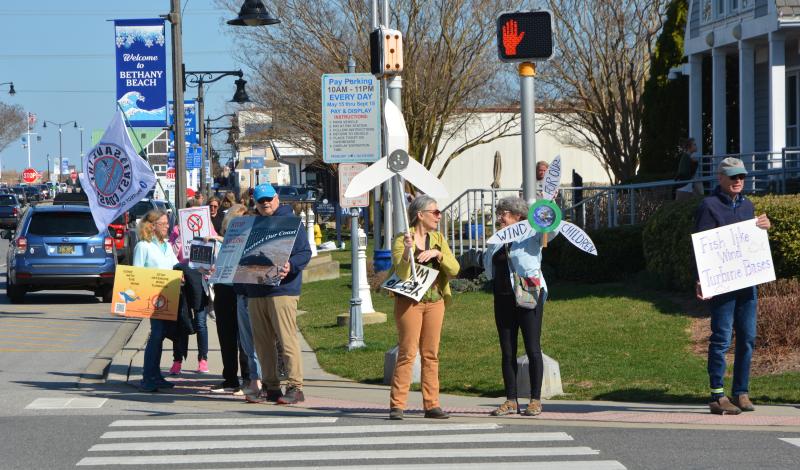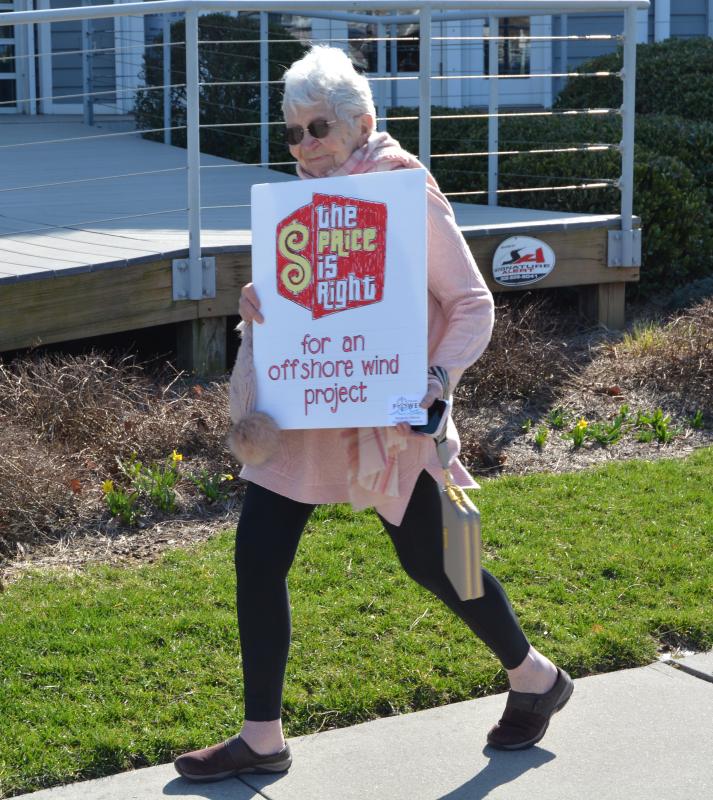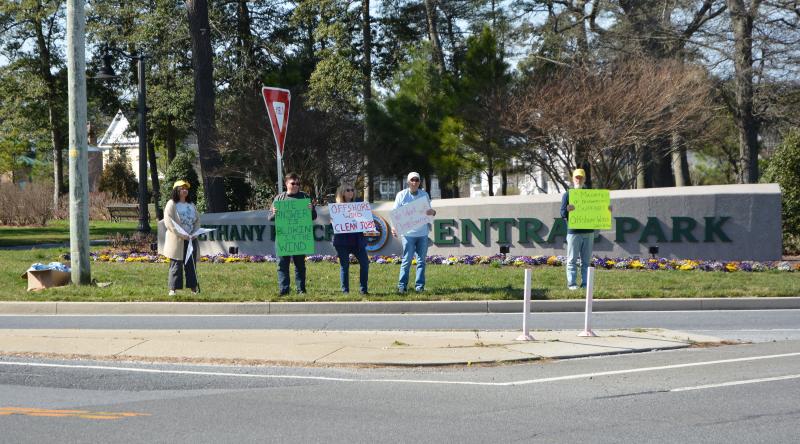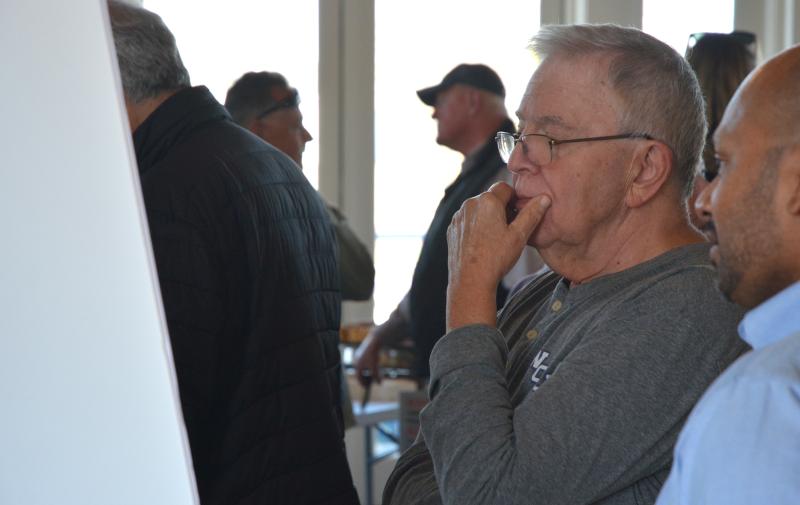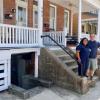Mixed reviews on bringing offshore wind cable to 3R’s Beach
The state hosted an information session March 12 on US Wind’s proposal to connect its offshore wind farm to the electrical grid with a land-based connection at 3R’s Beach, just south of the Indian River Inlet bridge.
Reaction to the proposal by those in attendance, many of whom were also outside advocating or criticizing, was mixed.
The information session was held in Bethany Beach Town Hall at the corner of Routes 1 and 26. There were people holding signs for and against the offshore wind farms on all four corners of the intersection and in the islands in between.
Lisa Locke held a homemade wind turbine with the phrase, “Wind for Our Children,” on its three blades. She described herself as passionate about climate change. She said the evidence is so compelling that climate change is happening and something has to be done.
“We’ve got to save the planet for our children and grandchildren,” said Locke.
Peter McLean was standing next to Locke. The US Wind project is about climate change, which is the greatest challenge humans will face, said McLean. Where the cables come ashore is far less important, he said.
Standing on the island in front of the Chief Little Owl totem pole, holding signs against the wind turbines, were Garret King and Don Hess.
King said he has concerns about large companies looking to build the offshore wind farms because they don’t have the vested interest in the community, and also about the costs.
“Those companies are never going to recoup their costs,” he said.
Hess said it’s not just people in coastal Delaware who don’t want offshore wind farms.
“All up and down the East Coast, nobody wants them,” said Hess.
King added that he’s concerned about what happens to turbines after they’re no longer working or break down. Those materials can’t just be recycled, he said.
Inside, far from the crowd outside, there were 12 to 15 employees from Delaware Department of Natural Resources and Environmental Control, some standing by posters answering questions, others milling about and answering questions.
According to one poster, there will be four underground concrete cable vaults installed in the 3R’s Beach parking lot. Each vault would be 47 feet long, 12 feet wide and 11 feet deep, and have 3 to 4 feet of cover on top. The vaults would be capped with concrete roof covers and include cable, joints and fiber optic lines. The excavation area needed in the parking lot would be 233 feet long, 60 feet wide and 15 feet deep. Construction would take place Sept. 15 through May 15, with the parking lot access restricted to construction personnel only. There would be no disturbance of dunes, wetlands habitats or the beach.
Another poster said the parking lot would be restored to its original condition and utilization would remain unchanged, but there would be eight manhole covers, each 36 inches in diameter, visible. There would be annual or semi-annual inspections by US Wind, and there would not be markers or buoys at 3R’s Beach, Indian River Bay or the Atlantic Ocean.
A significant portion of those who attended the information session came with an opinion on the placement of the onshore cable specifically and about offshore wind projects in general. However, not everyone did.
Dave Iredell lives in Sea Colony. He said he doesn’t think the visual effects will be that bad, but he did have concerns about animals during construction. Iredell said he felt obligated to be informed because he has a granddaughter in college studying marine life and he wanted to know as much as he could on the subject.
US Wind has twice been awarded offshore wind renewable energy certificates from the Maryland Public Service Commission – in 2017 for MarWin, which is expected to generate 300 MW, then again in 2021 for Momentum Wind in the same federal lease area, which is expected to generate about 808 MW. The company has proposed hooking its wind farm to the electrical grid at 3R’s Beach.
In late December, the governor’s office announced it had begun formal negotiations with US Wind for a land lease at 3R’s Beach. As proposed, the lease for the cable landing would be $350,000, with an annual increase of 3%, said the announcement. Additional benefits would include 150,000 renewable energy credits each year, with an estimated value of $76 million over the life of the projects; funding for dredging projects in Delaware’s coastal areas; funding for clean energy workforce development training at Delaware colleges and schools; an environmental education scholarship fund; a resiliency fund for climate change projects at state parks; and replenishing the 21st Century Fund. The outline of the agreement proposes that US Wind will provide $40 million for community benefits projects over 20 years, with specific amounts for each to be determined.
Chris Flood has been working for the Cape Gazette since early 2014. He currently covers Rehoboth Beach and Henlopen Acres, but has also covered Dewey Beach and the state government. He covers environmental stories, business stories, random stories on subjects he finds interesting and has a column called ‘Choppin’ Wood’ that runs every other week. Additionally, Chris moonlights as the company’s circulation manager, which primarily means fixing boxes during daylight hours that are jammed with coins, but sometimes means delivering papers in the middle of the night. He’s a graduate of the University of Maine and the Landing School of Boat Building & Design.











